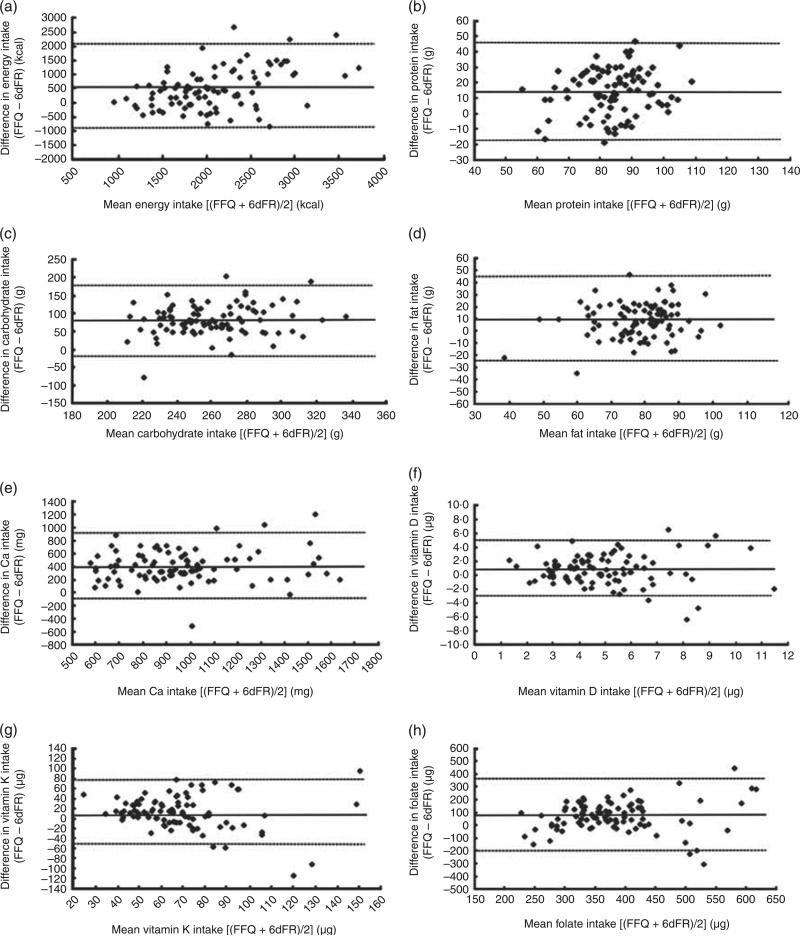Fig. 1.
Bland–Altman plots assessing the relative validity of the newly developed semi-quantitative FFQ for estimating the daily intake of selected nutrients in a convenience sample of ninety-two Puerto Rican adults (≥21 years) from the Medical Sciences Campus, University of Puerto Rico, 2010. For each participant, the difference in intake between the average of the two FFQ and the mean of the 6 d food records (6dFR) is plotted against the mean intake from the two methods for: (a) energy (1 kcal = 4·184 kJ); (b) protein; (c) carbohydrate; (d) fat; (e) calcium; (f) vitamin D; (g) vitamin K; and (h) folate. Lines —— represent the mean difference and lines - - - - - represent the 95 % limits of agreement. For energy intake, the mean difference between the two methods was 2193 kJ (524 kcal), with a 95 % CI of −4230, 8611 kJ (−1011, 2058 kcal); for protein, mean difference = 14·6 (95 % CI −18, 47) g; for carbohydrate, mean difference = 80 (95 % CI −18, 177) g; for fat, mean difference = 10 (95 % CI −24, 44) g; for calcium, mean difference = 396 (95 % CI −93, 885) mg; for vitamin D, mean difference = 0·7 (95 % CI −3·0, 5·6) μg; for vitamin K, mean difference = 12 (95 % CI −55, 79) μg; for folate, mean difference = 83 (95 % CI −200, 367) μg

